 |
| KV-1E captured by the Finns in 1942 and used against it's former owners! Source: Precision Panzers |
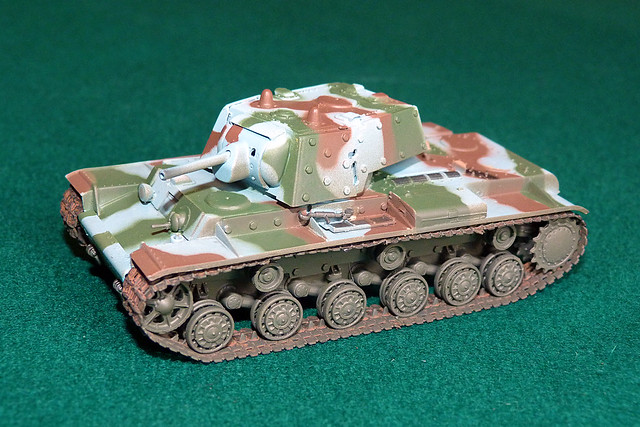 |
| What's going on? That's not a truck! |
I've been keeping my eye on eBay for potential bargains and my patience has been rewarded as over the course of a year or so I have picked up three 'die cast' tank models that are what I needed to make up one of the Finnish Continuation War 'heavy tank' companies. Today the last of the three tanks I needed arrived - an Easy Model 1/72 KV-1 Model 1941 Heavy Tank 'Finnish Army' and it only cost £6.
This will join the die-cast Fabbri T-28 and Altaya T-34/76 I have already collected and I admit it is a eclectic collection. But beggars can't be choosers and the Finns were desperate for 'modern' armour during WW2 so they put whatever Soviet tanks that they captured into service.
Obviously you might think that this isn't a very effective 'heavy' tank force - especially by 1944 - and that's fair comment. The T28 was already obsolete when the Soviets used them against the Finns in 1940, the KV-1 was really past it's best by the end of 1942 and the 76mm gunned T-34 was superseded by the 85mm gunned T-34/85 at the back end of 1943. And in any case, by late WW2 only the KV-1 could had the stature to really quality as a 'heavy' - and none of these three had a gun that could compare to the real heavies of the period that were sporting guns of calibers from 88mm to 122mm (a 76mm gun, or thereabouts, was classified as 'medium' by the end of the war)!
"While Finnish Army considered T-28 to be obsolete already in year 1942, the very limited number of medium and heavy tanks in Finnish use forced also these tanks to be kept in combat use. T-28E tanks that were in operational condition took part to some of the battles that Tank Brigade fought in summer of 1944, but due to their obvious weaknesses they were apparently often retained further back and used mainly as fire support for other more modern tanks and assault guns." [www.jaegerplatoon.net/]
Quality wise all of these models are more than acceptable for war gaming. All the external detail is there, albeit moulded into the surface and some simplification has been done. Having said that they are a better standard of detail than, say, and Armourfast or PSC plastic quick build model.
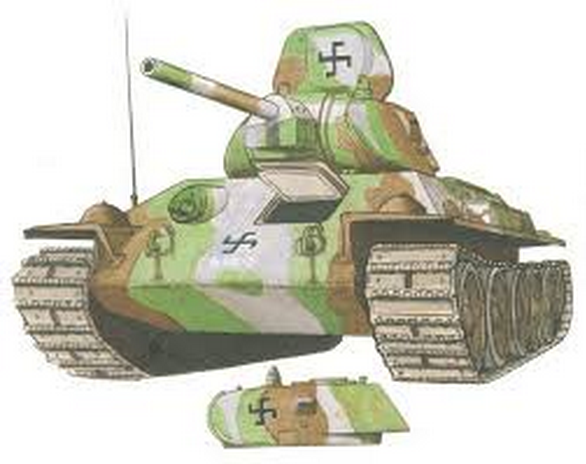 |
| The Finnish colour scheme for the T-34/76 m41. This also shows how the Finns 'clipped' the original fenders (mud-guards), I guess because of the heavy mud encountered in the forests of their country. |
Painting schemes are all adequate for their intended purpose, but only the KV-1E is actually in a 'Finnish' period camo. But, unfortunately, the grey they have used is actually a distinctive blue-grey (my harsh flash fools you into thinking it is the proper mid-grey). So all three models will have to be completely repainted.
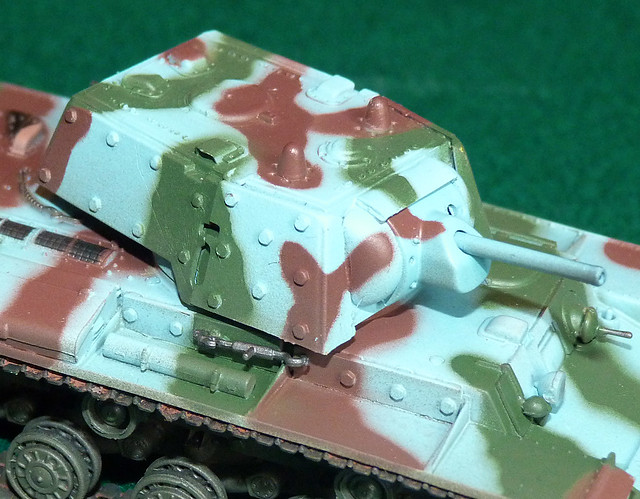 |
| This photo without flash better illustrates the blue-grey colour that has been used on the Easy Model 'Finnish' KV-1. This is not correct, rather it should be a plain mid-grey. |
 |
| Picture source: Armchairgeneral.com |
Conclusion
Using die-cast or 'ready made' models for war gaming is a no-brainer when they are of this quality, especially if you are willing to wait for bargains to come along on eBay. Obviously if you want a certain level of historical accuracy you might have to do some re-hashing, but it's still less work than a plastic kit.
From a display modeller point of view there may still be some merit in looking at die-casts, especially if you can get hold of models that aren't necessarily available in 1/72 plastic kit form, like the T-28 (there is a very expensive resin Solfig T-28 kit out there, if you can find it).
I'm very pleased with this little collection and look forward to painting them. Despite the variation in types they should it should look a very smart unit when they all have matching Finnish three-colour camo added.
[Incidentally, the Rapid Fire rules for a Finnish Continuation War period order of battle allows for two such 'heavy' tank companies. But to further illustrate the ad-hoc armour inventory of the Finns the KV-1 should be replaced with a T-34/85 (arguably the most potent tank available to the Finns) and I will replace the T-34/76 Model 1941 with a T-34 Model 1943.]
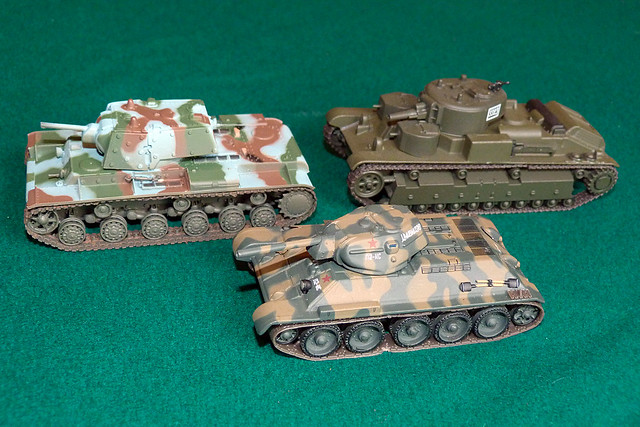
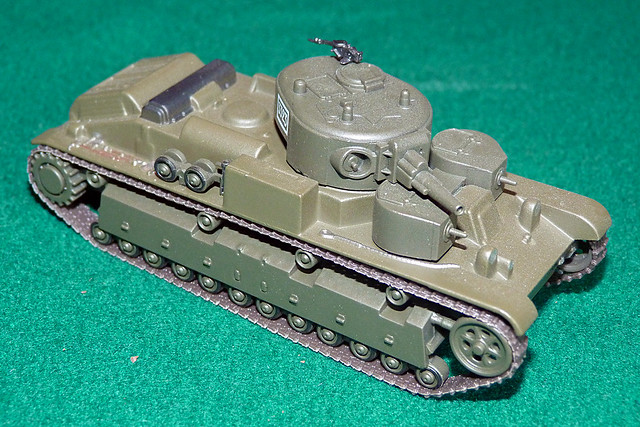


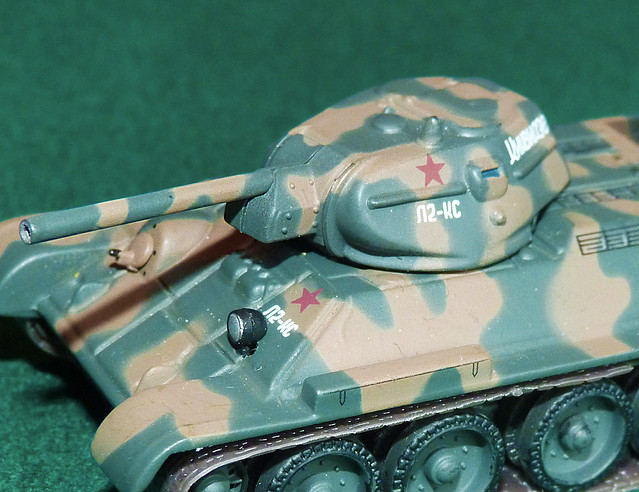
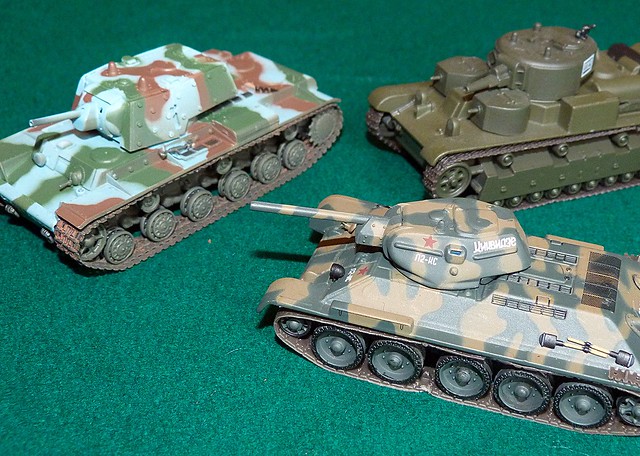
A interesting mix there Stephen. The T-28 will be a lot of fun on the table I reckon.
ReplyDeleteHi Paul, from a war game point of view a multi-turreted tank must have some advantages when engaging multiple targets. I know there is a rule for that in the Bolt Action system. So long as one of those targets isn't another tank that is! :)
Delete